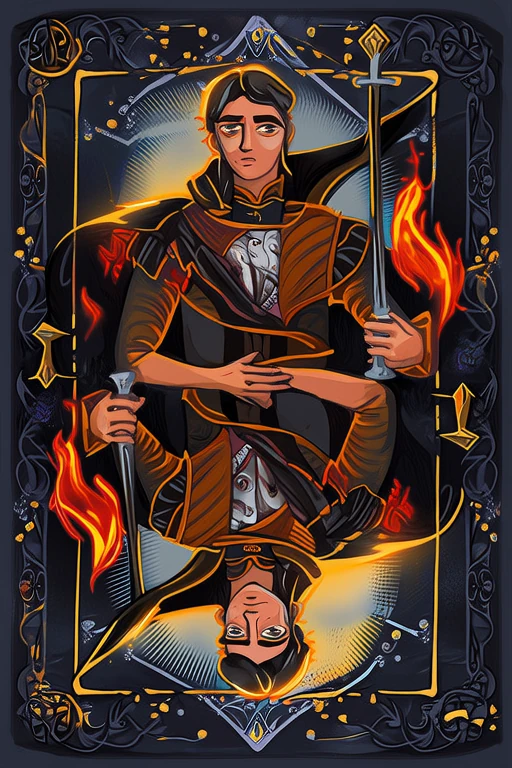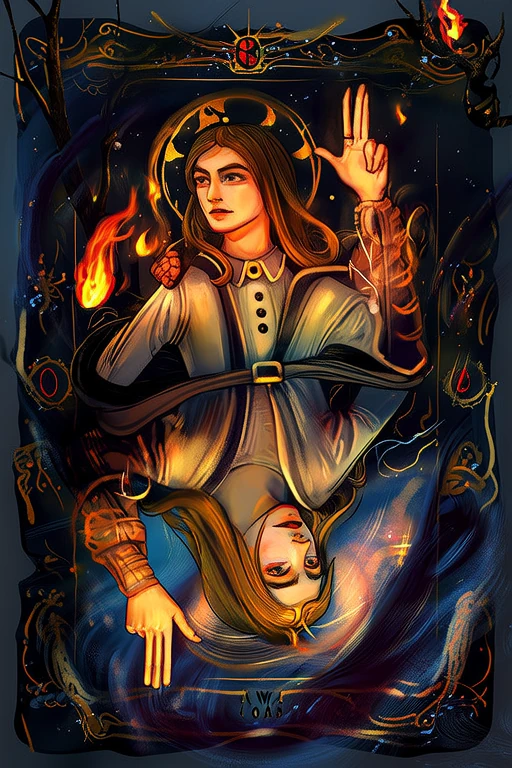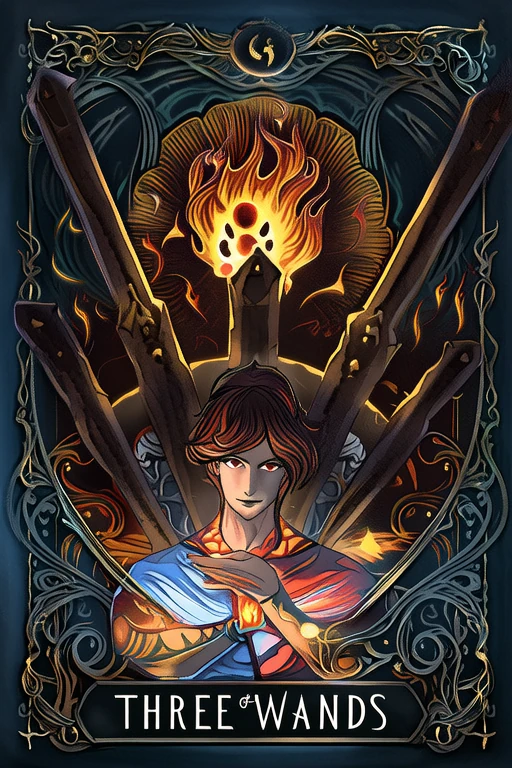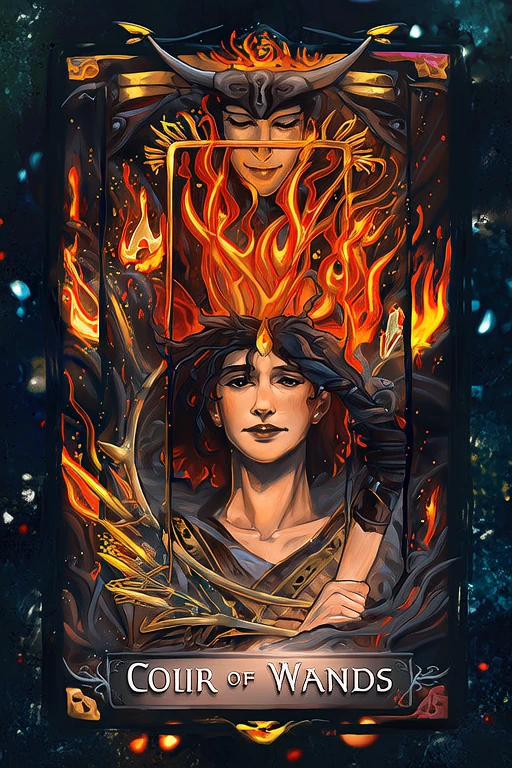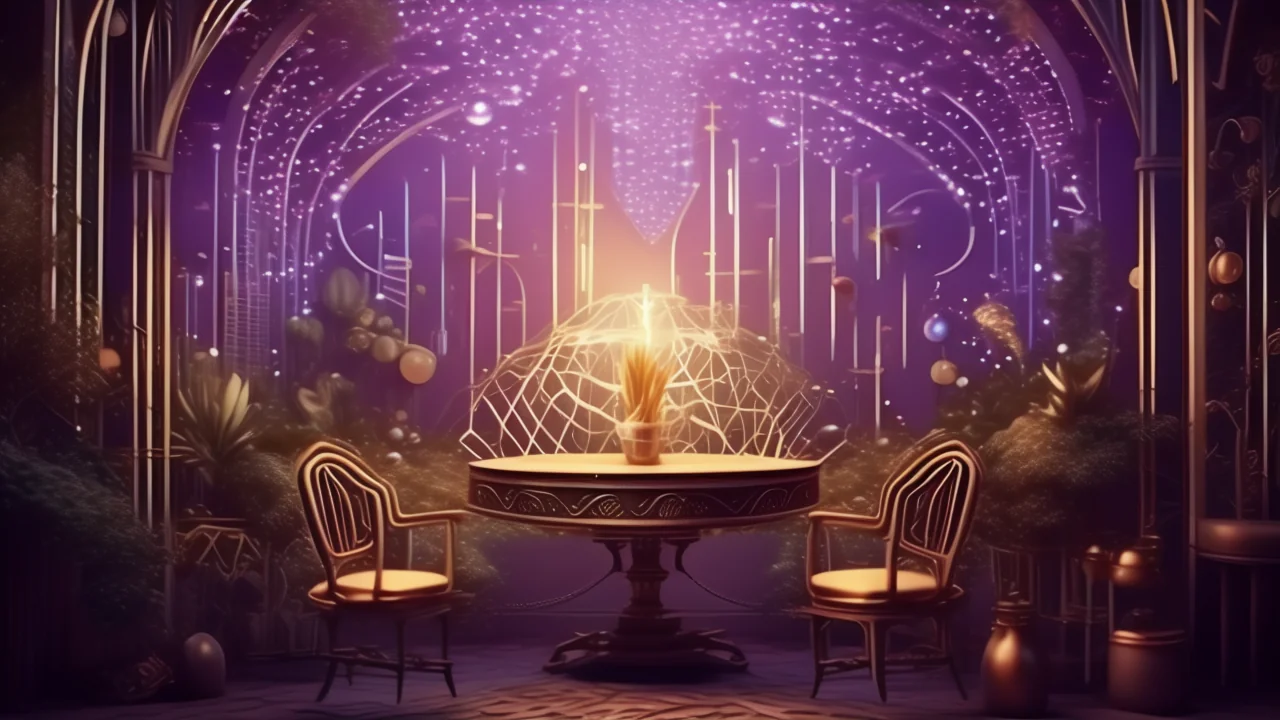
Ten of Wands
Discover the deep meaning of Ten of Wands with our free AI-powered tarot interpretation. Get instant, accurate readings based on advanced tarot knowledge.
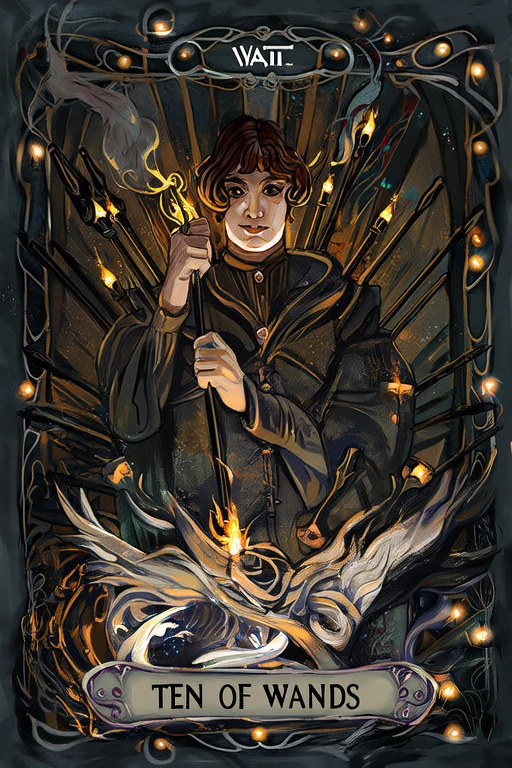
Keywords
Upright Meaning
Burden, extra responsibility, hard work
Reversed Meaning
Inability to delegate, overstressed, burnt out
Full Interpretation
The Ten of Wands represents burden, responsibility, and the weight of obligations.
In-Depth Analysis
📜 Historical Background
The Ten of Wands, like all tarot cards, traces its origins back to early 15th-century Europe, particularly in Italy and France, where tarot was first used as a playing card game before evolving into a tool for divination and esoteric study. Known originally as the 'Trionfi' (triumphs) or 'Tarocchi' in Italy, the tarot deck was not initially intended for mystical purposes. The Ten of Wands, part of the Minor Arcana, belongs to the suit of Wands, which is associated with the element of Fire and corresponds to the astrological signs of Aries, Leo, and Sagittarius. In the Rider-Waite-Smith (RWS) tradition—the most widely recognized and influential tarot system—the Ten of Wands depicts a figure bent under the weight of ten heavy wands, often interpreted as a symbol of burden, responsibility, and perseverance.
Historically, the imagery of the Ten of Wands draws inspiration from classical mythology and allegorical representations of labor and endurance. Some scholars link the card to the myth of Hercules and his twelve labors, particularly the task of cleaning the Augean stables, which required Herculean effort and symbolized the triumph over overwhelming odds. Others see parallels with the biblical figure of Simon of Cyrene, who was compelled to carry the cross of Jesus, representing the bearing of another's burdens. These mythological and religious associations have contributed to the card’s enduring symbolism of struggle, sacrifice, and endurance.
Over time, the visual representation of the Ten of Wands has evolved across different tarot decks. In early Marseille-style decks, the card is more abstract, featuring a simple arrangement of ten wands in a crisscross pattern, with minimal narrative or human figures. This design emphasized the card’s numerical significance and elemental association with Fire. However, the Rider-Waite-Smith deck, illustrated by Pamela Colman Smith under the direction of A.E. Waite in 1909, introduced a more vivid and symbolic image: a man straining under the weight of ten upright wands, appearing overwhelmed yet resolute. This humanized depiction allowed for deeper psychological and emotional interpretation, influencing modern tarot practices.
Culturally, the Ten of Wands holds varied significance. In some traditions, it represents the culmination of effort in the Wands suit, indicating the final stages of a project or endeavor. In others, it warns of taking on too much or becoming overburdened. In Eastern European and Slavic tarot traditions, the card may be interpreted differently, often with a focus on community responsibility and familial obligations. In modern neo-pagan and New Age contexts, the Ten of Wands is frequently associated with karmic burdens, emotional weight, and spiritual growth through adversity. The evolution of the card across cultures and time periods underscores its universal resonance as a symbol of human struggle and the enduring capacity for resilience.
Symbolism & Imagery
The Ten of Wands is rich in symbolic meaning, with each element of the card contributing to its overall interpretation. At the center of the card is a figure—often depicted as a man—struggling under the weight of ten upright wands. His posture is bent forward, conveying physical and emotional strain. This imagery symbolizes the burden of responsibility, the exhaustion of carrying too much, and the challenge of perseverance in the face of overwhelming odds. The figure’s expression is typically one of determination despite the weight he bears, suggesting that while the load is heavy, it is not impossible to carry.
The wands themselves are upright and parallel, indicating structure, purpose, and direction. They are not chaotic or broken, suggesting that the burden is organized and intentional, perhaps a result of commitments or responsibilities willingly taken on. The number ten, as the final number in the suit of Wands, signifies completion, culmination, and the end of a cycle. In numerology, ten reduces to one (1+0=1), symbolizing new beginnings after the completion of a difficult journey.
Colors in the Ten of Wands also carry meaning. In the Rider-Waite-Smith tradition, the background is often muted or dull, suggesting fatigue, weariness, or the end of a long effort. The figure’s clothing is typically earth-toned, linking the card to groundedness and practicality, while the brown of the wands reinforces the idea of tangible, real-world burdens.
Across cultures, interpretations of the Ten of Wands vary. In traditional European cartomancy, the card often warns of overwork or the need to delegate responsibilities. In Latin American and Romani tarot traditions, it may be associated with family obligations and the sacrifices made for loved ones. In modern psychological interpretations, the card represents internal burdens—such as guilt, anxiety, or self-imposed expectations.
When upright, the Ten of Wands signifies feeling overwhelmed by responsibilities, carrying too much on one’s shoulders, or nearing the end of a difficult task. It suggests that while the burden is heavy, it is nearing completion. In a reversed position, the card may indicate the release of burdens, learning to let go, or the danger of collapsing under pressure. It can also suggest the need to reassess priorities or to ask for help.
The Ten of Wands connects to other cards in the Wands suit, particularly the Nine of Wands, which deals with resilience and defense, and the Eight of Wands, which represents rapid movement and progress. Together, these cards form a narrative of struggle, endurance, and eventual release. In the broader tarot deck, the Ten of Wands resonates with the Five of Pentacles (hardship and struggle) and the Seven of Cups (overwhelm and confusion), offering a complex picture of emotional and practical burdens.
Psychological Insights
From a psychological perspective, the Ten of Wands can be interpreted through the lens of Carl Jung’s archetypes and the collective unconscious. The figure bearing the wands may represent the archetype of the Suffering Hero or the Burdened Individual, someone who takes on the trials of life with determination but at great personal cost. This archetype resonates with the human experience of carrying responsibilities, whether they be professional, emotional, or spiritual. The card reflects the tension between the ego’s desire to succeed and the shadow’s warning of burnout or emotional exhaustion.
In modern life, the Ten of Wands serves as a mirror to the pressures of contemporary society. It speaks to the individual who feels overwhelmed by work, family obligations, or self-imposed expectations. It is a reminder that while perseverance is admirable, it is also essential to recognize when one is carrying too much and to seek support or delegate tasks. The card encourages individuals to evaluate their commitments and consider what can be released or restructured to achieve balance.
For personal growth and self-awareness, the Ten of Wands prompts introspection about the sources of one’s burdens. Are they externally imposed, or are they self-created? The card invites individuals to examine their motivations and to consider whether they are taking on responsibilities out of fear, guilt, or a genuine sense of purpose. This self-awareness can lead to healthier boundaries and a more sustainable approach to life’s challenges.
In therapeutic and counseling settings, the Ten of Wands can be used to explore themes of stress, burnout, and emotional overload. Counselors and therapists may use the card to help clients articulate their feelings of being overwhelmed and to guide them toward strategies for managing stress. The card can also be a tool for discussing the importance of self-care, setting limits, and seeking help when needed.
In modern spiritual practices, the Ten of Wands is often linked to karmic lessons and the idea that certain burdens are part of a soul’s journey. It may appear in readings when someone is nearing the end of a difficult phase and is being called to reflect on what they have learned. Some practitioners use the card in meditation or energy work to explore themes of release, surrender, and transformation. It serves as a reminder that while the path may be heavy, there is strength in perseverance and wisdom in knowing when to let go.
Correspondences
The Ten of Wands is associated with the astrological sign of Sagittarius, ruled by Jupiter, the planet of expansion, growth, and higher learning. Sagittarius energy brings a philosophical and exploratory dimension to the card, suggesting that the burdens represented may be part of a larger journey toward understanding or personal evolution. Jupiter’s influence also hints at eventual relief or expansion after a period of difficulty.
In terms of gemstones and crystals, the Ten of Wands resonates with grounding and protective stones such as Black Tourmaline, Smoky Quartz, and Hematite. These stones can help absorb emotional weight and provide strength during times of stress. Essential oils like Cedarwood, Frankincense, and Vetiver are beneficial for grounding and calming the mind, while herbs such as Sage, Lavender, and Mugwort can be used in rituals to cleanse energy and promote release.
The card is linked to the element of Fire, which governs passion, action, and willpower. Fire’s dynamic energy reflects the card’s theme of striving forward despite obstacles. In terms of seasonal correspondences, the Ten of Wands may align with late autumn or early winter, a time of harvest and preparation, symbolizing the culmination of efforts and the transition into a period of rest.
Chakra-wise, the Ten of Wands is connected to the Root Chakra (Muladhara), which governs stability, grounding, and survival. When this chakra is imbalanced, individuals may feel overwhelmed or unstable, making the card a reminder to reconnect with one’s foundation and restore inner strength. Energy work involving the Root Chakra, such as meditation or grounding visualizations, can help alleviate the burdens represented by the card.
Numerologically, the number ten signifies completion and the beginning of a new cycle. It combines the energy of the number one (new beginnings, leadership) with the zero (wholeness, potential), suggesting that after the weight of responsibility is lifted, a fresh chapter awaits. This reinforces the card’s message of endurance and the promise of relief after a difficult journey.
❓ Frequently Asked Questions
**What does the Ten of Wands mean in a tarot reading?** In a tarot reading, the Ten of Wands typically signifies feeling overwhelmed, carrying too much responsibility, or nearing the end of a difficult journey. It suggests that while the burden is heavy, it is also temporary and nearing resolution.
**Is the Ten of Wands always a negative card?** While the card often has a negative connotation due to its imagery of struggle, it is not inherently negative. It serves as a reminder to assess one’s responsibilities and consider what needs to be released or delegated. It can also indicate perseverance and resilience in the face of adversity.
**What does the reversed Ten of Wands mean?** Reversed, the Ten of Wands may indicate the release of burdens, learning to let go, or the risk of burnout. It can also suggest that the querent is beginning to recognize the need for support or a change in approach.
**How does the Ten of Wands interact with other cards?** When paired with cards like the Nine of Swords, it may indicate emotional overwhelm. With the Ace of Cups, it could suggest emotional healing after a difficult period. With the Two of Pentacles, it might advise the need for balance and adaptability.
**What are common misconceptions about the Ten of Wands?** Beginners often assume that the card always predicts failure or that the burden cannot be overcome. In reality, the card acknowledges the difficulty but also implies that the end is near and that strength is available to carry on.
**What spreads work well with the Ten of Wands?** The card is powerful in spreads that explore stress, work-life balance, or decision-making under pressure. It works well in a three-card spread for past-present-future readings or in a Celtic Cross spread to highlight challenges and potential outcomes.
**How can I interpret the Ten of Wands in different contexts?** In love readings, it may suggest emotional burdens or relationship strain. In career readings, it points to work overload or the need for delegation. In health readings, it can indicate physical exhaustion or the need for rest. Always consider the surrounding cards and the querent’s specific situation for a nuanced interpretation.
